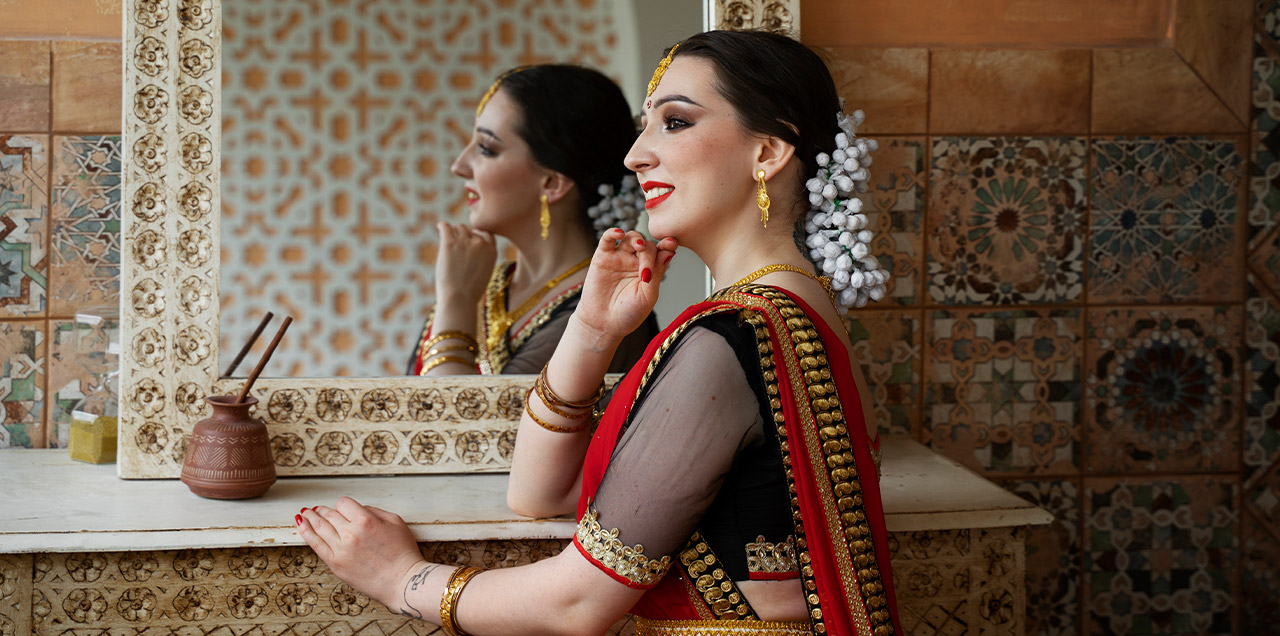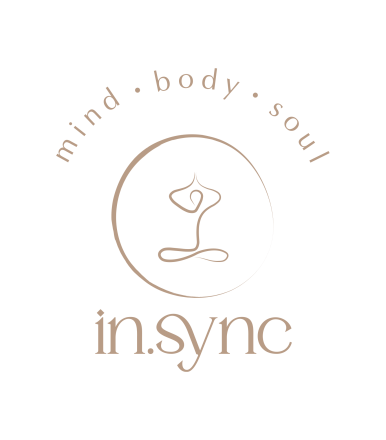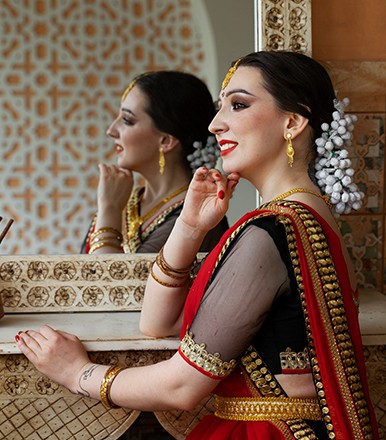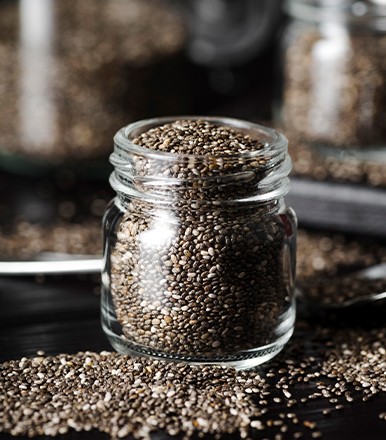Do you know what’s amazing about being born as an Indian? The inheritance we are passed down with. Here we are not talking about material things and wealth, it is a boon though. But, we are talking about the wisdom, knowledge, rich cultural literacy, and authentic perspective that our ancestors gave us. In this segment, we open our ‘Nani ka pitara’, and we unfold such inherited legacies.
The more we learn about the culture and traditions of ancient India the more it amazes us. Indian traditions are a tapestry woven by customs, rituals, and beliefs that have been passed down through generations. While they may appear steeped in mysticism and antiquity, a closer examination reveals a profound underlying logic and scientific rationale behind each tradition. One such unique and amazing tradition is the attire and ornaments worn by Indian married women.
The ancient traditions of India were founded on a combination of science and wisdom. Each ritual, attire, and custom had a purpose beyond mere symbolism, providing valuable insights into the workings of the universe and human experience. These traditions evolved, giving us a deeper understanding. The post-marital phase is considered significant in a woman’s life. From being a girl to a wedded lady she undergoes many emotional, physical, and psychological ups and downs. To regulate her physical and mental state during the phase our ancestors decoded some remedies and to make them easily acceptable they related them to post-marital rituals.
The attire and adornments worn today are the results of years of research and study by our ancestors. The fabric chosen and woven, the metal and ore from which the ornaments were made were chosen based on their properties to react with the body temperatures and energy flow. For instance, cotton and silk fabrics are breathable and comfortable, suitable for various climates. Additionally, certain materials like wool and silk have natural insulating properties, helping to maintain a comfortable body temperature. They usually prefer to wear ornaments made using gold for the upper part of the body and silver for the lower part of the body. It is said that the reason behind this concept is, that gold reacts with the body’s energy whereas silver reacts with the earth’s energy. All these ornaments have been worn by Indian women for centuries as evidenced by our ancient paintings and sculptures.
Let us specifically see into each adornment and the science behind them;
Sindoor
Adorning the hair parting by applying Sindoor (vermilion) on the forehead is an age-old custom symbolizing marital bliss and prosperity. Beyond their ceremonial significance, these vermilion hues carry profound scientific reasoning. Made from mercury, turmeric, and slaked lime, vermilion possesses antiseptic properties, keeping the bride's scalp cool and free from infections. Mercury is a catalyst that helps ease stress, keep the brain active and alert, and even control blood pressure. It also helps to regulate the sexual feelings that occur during the hormonal changes after marriage.
Bindi
The place where women put on their bindi is known as the Ajna chakra, which is known as the sixth and the most powerful chakra of the human body. As a wedded woman, one needs a lot of wisdom and calm in her day-to-day life. The bindi is said to help control the latent energy released through the Ajna chakra during meditation. Also called the third eye, the Ajna chakra sees the inner world just as physical eyes see the external world; the bindi, pressing the chakra, helps its wearer access her inner wisdom and interpret matters in an unbiased, rational manner.
Nath/Nose Ring
The Nath, or nose ring, holds a special place in Indian bridal adornment, symbolizing femininity, beauty, and cultural heritage. Beyond its ornamental charm, the Nath is adorned for its scientific benefits. Positioned on the left nostril, it is believed to enhance the bride's reproductive health by regulating menstrual cycles and reducing the risk of gynecological disorders. Additionally, the pressure exerted by the Nath on the nasal septum is said to alleviate sinus congestion, promoting respiratory well-being.
Earrings
Ear piercing and wearing ear jewelry is a significant ceremony performed in the Hindu culture. The ear is pierced with high precision at the acupuncture pressure point between the nerves that run to the eyes and reproductive organs in the females. The friction the earring creates thus results in better eyesight.
Bangles
These are worn on the hands to promote blood circulation and the electromagnetic energy passing through the outer skin is reverted to the body because of its ring shape. Pregnant ladies wear lots of glass bangles to give acoustic stimuli to the fetus encouraging normal delivery. Moreover, the melodious tinkling of bangles is believed to ward off negative energies, creating a harmonious aura around the wearer.
Rings
Mostly these are made of metals like Gold, silver, and copper. These are worn by women usually on their ring finger and thumb finger but are not preferred on the middle finger, since it has the end of the nerve which passes through the brain divider. The ring finger has the heart’s nerve ending in it and the thumb finger if pressurized gives out pleasure hormones.
Gemstones
Since ancient times gemstones have been used in the creation of ornaments. Gemstones have adorned Indian jewelry for centuries, valued not only for their vibrant hues but also for their astrological and healing properties. The practice of wearing specific gemstones according to one's astrological chart, known as "navaratna," is deeply rooted in Vedic astrology. Each gemstone is associated with a celestial body and is believed to influence various aspects of one's life, from health to prosperity. Different gemstones studded in the ornaments are worn in different parts of bodies for various health reasons.
Payal/ Anklet
Worn on the ankles usually made of silver which helps to retain energy and helps to lessen the joint pains and the jingling sound keeps away the negative energy. Scientifically, silver is believed to possess antimicrobial properties, keeping the wearer's feet cool and free from infections. Furthermore, the rhythmic movement of anklets stimulates blood circulation, enhancing overall vitality and well-being.
Toe rings
It is worn by married women on the second toe. The toe rings regulate blood pressure levels and the nerve in the second toe in which the toe rings are preferably worn is directly connected to the uterus and passed by the heart so it regulates the menstrual cycle and helps conceiving. Scientifically, these are designed to exert gentle pressure on specific acupressure points, promoting blood circulation and alleviating menstrual discomfort.
In essence, post-marriage ornaments for women are not merely embellishments; they are embodiments of tradition, culture, and scientific wisdom passed down through generations. As brides adorn themselves with these timeless treasures, they not only celebrate the joyous union of marriage but also embrace a legacy of elegance, grace, and holistic well-being. Let us cherish the beauty of these adornments, honoring their cultural heritage and the scientific rationale that underpins their enduring allure.
Hello Fitness Magazine is your go-to resource if you're seeking comprehensive insights into holistic wellness for the modern woman. From fitness tips tailored to busy schedules to mindfulness practices and nutrition guidance, our magazine covers a wide spectrum of topics to support your journey towards a balanced and Healthy lifestyle. Visit the Website to explore our latest articles and discover expert advice on achieving wellness in today's fast-paced world.














